Text
Moving Platforms
I have officially started moving all of my articles and posts from my Tumblr, Judaic-myth-n-mysticism, to my new blog https://judaic-myth-n-mysticism.blogspot.com/. Tumblr has just proved to not be the right medium for me and I am hoping that having my own platform will allow me to write more with more academic rigor as well as to be more in-depth. I very well may open a Twitter devoted to Jewish mysticism in the future so stay tuned for that if you're interested! I am going to Archive this Tumblr as I know many new practitioners like to use Tumblr to find information and I want to keep it accessible to them, but all new posts will be on my blog.
38 notes
·
View notes
Text
Put a finger down every time a wiccan has tried to shame you for not following or buying into the Three-Fold law. Idk about y’all but I’m gonna need a couple extra hands...
#jew#angels#demons#jewitch#kabbalah#mythology#torah#wicca#witch#witchblr#three fold law#threefold law#witchcraft#wiccan#ethnocentrism#paganism#magic#occultism
56 notes
·
View notes
Text
The Jewish Approach to Herbal Magic: A Metaphysical Framework and The Legal Guidelines.
(TLDR at very bottom)
It is no secret that the sages were masters of using herbs in all sorts of miraculous matters. So common were these practices that they warranted being given a name by the sages, “Kamea shel Ikrin,” or an amulet of roots. We see several instances of this craft throughout rabbinic literature such as the garlands of the madder plant that Abaye discusses in Shabbat 90b. So potent were these knots considered that the Mishnah actually allows them to be worn on shabbos!
However, the Sages also make it very clear that the use of herbs is a core piece of forbidden and goyische magic. We see this in Ameimar’s incantation against witches (kind of peak irony there if you ask me) where it refers to herbs saying, “You’re spices, which you use for witchcraft should scatter.” (Pesachim 110a)
This leaves us with the question: What makes one mixture permitted and the next forbidden?
For this, I draw on the Sefer HaChinukh, a Spanish legal text of the late 13th century, which devoted a chapter to this very matter.
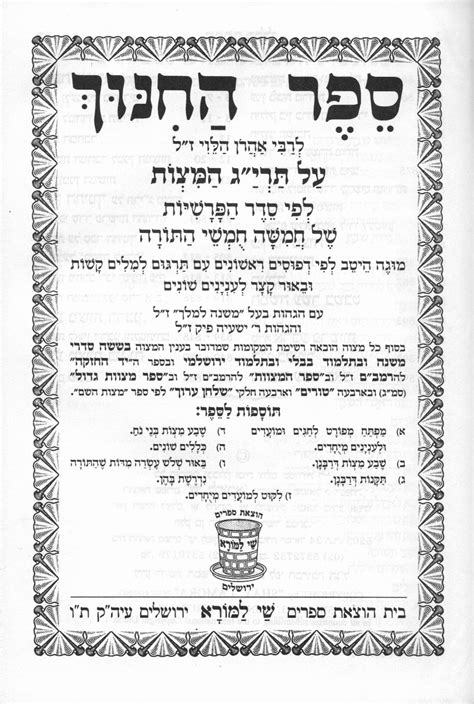
In explaining the nature of forbidden herbal magic the Sefer HaChinukh writes:
“And according to my opinion, the matter of magic is that at the beginning of creation, God, blessed be He, placed for each and every thing in the world a nature [through which] to accomplish its action well and straight, for the good of the creatures of the world that He created; and He commanded each one to act according to its species, as it is written about all the creatures, in Parshat Bereshit (Genesis 1:12), “according to its species.” And He also made a higher force govern each and every one from above, to compel it to perform its action; as they, may their memory be blessed, said (Bereshit Rabbah 1), “There is no [blade of] grass below that does not have a constellation above that tells it, 'Grow!'”And besides the action that each and every one does according to its nature, there is another action that they have, by mixing one specie with another. And in the craft of this mixing there are some angles that were not permitted for people to utilize, because God knows that the end result that will come out for people from these angles will be bad for them...And there is another matter in these forbidden angles of mixture and machinations for which they were forbidden. [It is] because the power of this mixture is so strong that it negates the power of the constellations that are assigned upon the two species.... It comes out that the grafting negates the power of both of them. And so we have been prevented from bringing up to our minds to switch the perfect acts of God, even if something that appears to be pleasing comes out in our hand.” (Sefer Ha Chinukh 62:2)
We see here how the combination of herbs yields its affect. By combining the correct herbs with kavanah, we bring together the ministering angels over each of the herbs used into a “new” ministering angel which is then channeled through the herbs. This is the function of both the permitted and the forbidden herbal mixtures. However, the distinction we strike is that the prohibited mixture causes this angel to go against the laws of nature by breaking free of its Mazel whereas the permitted mixture’s angel works within said Mazel and the natural order.
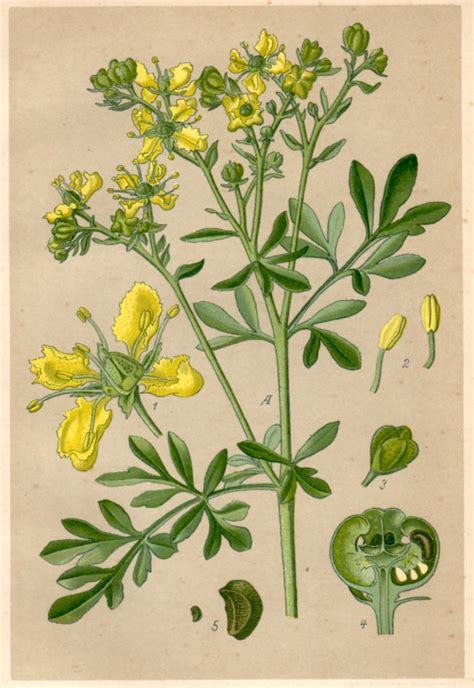
(Rue, a staple of Jewish herbal tradition. It is commonly carried as an amulet for protection, particularly in regards to protection from sickness where it is immensely popular in Hasidic communities)
From the above passage we derive the two main features of a forbidden herbal mixture:
These forbidden mixtures are dangerous to us and so HaShem forbids their use for our own good.
These mixtures subvert the laws of nature and pervert the natural order that Gd has created. The reason this is problematic is that to do so is to say that we know better than Gd, which of course is not the case. This all goes back to the commandment of “You must be wholehearted with the L-RD your G-d.” (Deut. 18:13)
Either of these criteria being met would disqualify the use of an herbal mixture within Jewish law.
However, this leaves plenty of room for herbal mixings and charms that, most modern practitioners would call “magic”, that are permitted. The Sefer HaChinukh actually goes on to elaborate on this saying:
“...And this is what they, may their memory be blessed, said more generally (Shabbat 67b), “Anything that has healing in it does not have the 'ways of the Amorite' in it”; meaning to say, it should not be forbidden from the perspective of magic – since there is a benefit to it that is found from true experience, it is not from the forbidden angles, as they are only forbidden because of the perspective of their damage (Sefer Ha Chinukh 62:2)...”
It continues on these permitted practices, writing;
“...And the knowledge of the difference [between] these things – which is the mixing He permitted to us and there is no angle of magic and which is the one that has an angle of magic and is forbidden as the science of magic – is well-known...”
While this quotation does little to directly explain how to determine wether a specific mixture is forbidden or permitted, it does in fact confirm that there are herbal mixtures that are permitted for use. However, if we give it some thought we can come to some conclusions of what would be permitted, at least on a philosophical level.
My interpretation of this would be that while herbal mixtures that work to override the laws of nature are forbidden, ones that simply attempt to influence the outcome of a situation within the framework of the natural order are acceptable and have been used by great sages for centuries.
This can be boiled down to 3 key markers of a permitted herbal mixture. To be considered permissible these mixtures must:
Be proven effective for their desired, beneficial, purpose.
Not be damaging to our health physically, emotionally, or spiritually. (Looking at you mugwort tea -.-)
Not cause the laws of nature to be overridden to serve us.
These are the mixtures we see used in many herbal amulets and segulot throughout Jewish history, and these are the mixtures that I personally make use of in my practice.
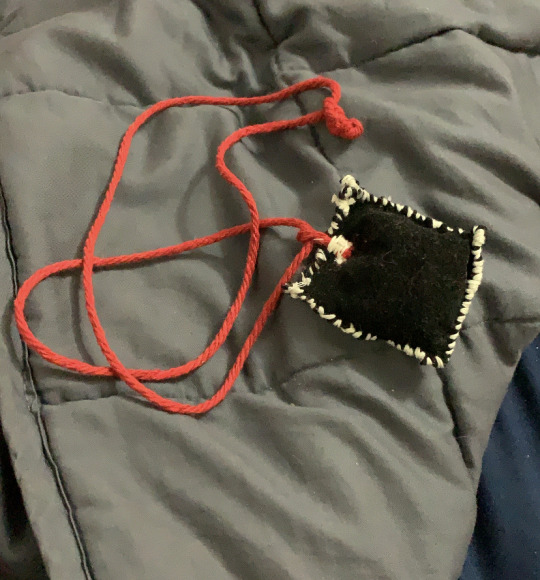
(An amulet I prepared using a collection of herbs that I had previously shared on here.)
TLDR: Herbs that break nature and/or hurt us = NO!
Herbs that work within the natural order to encourage a desired benefit in a effective & safe manner = YES!
#jewish#jew#angels#demons#jewitch#kabbalah#mythology#segula#talmud#torah#herbs#herbal amulet#spell jar#Judaism#Jewish magic#green witch#spell work#halacha#metaphysics#occultism#occult#Mishnah#sages#Jewish law#Hasidic#chassidism#HaShem#witchblr#Shabbat#rabbinic magic
326 notes
·
View notes
Text
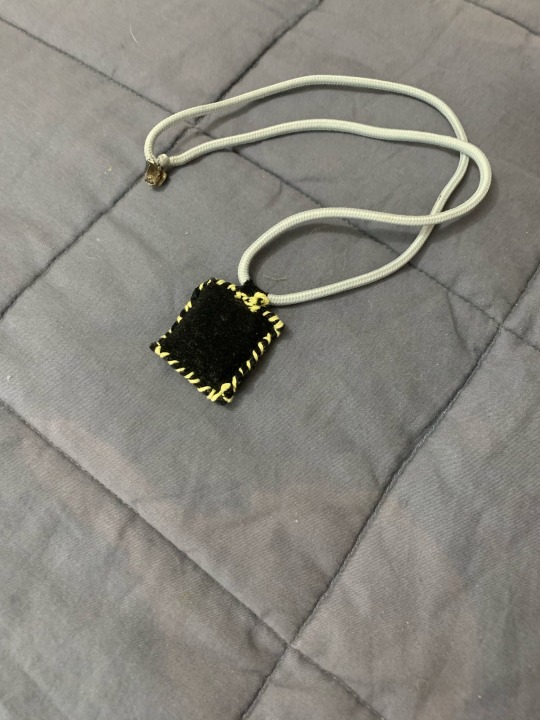
A personal amulet for protection containing the book of psalms and herbs.
#jewish#jew#angels#demons#jewitch#kabbalah#talmud#mythology#segula#torah#amulet#magic#folk magic#segulah#Segulot#Jewish magic#Jewish mysticism#witchblr#psalms
30 notes
·
View notes
Text
An amulet of herbal mixtures + a simple written segulah against the Quilpoth from the Sefer HaMidot I assembled for my brother.
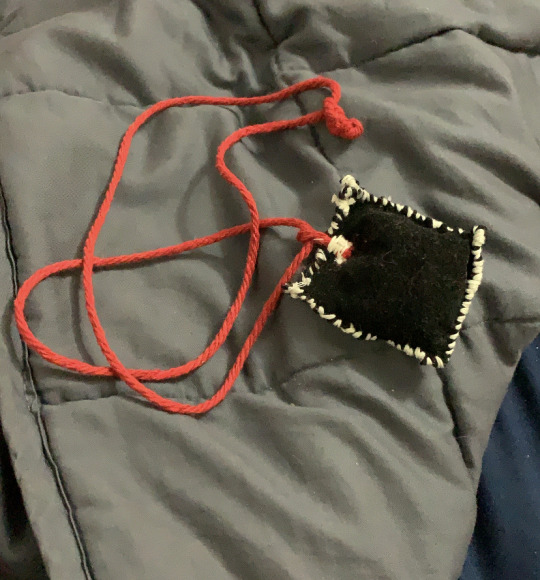
#jewish#jew#angels#demons#jewitch#kabbalah#mythology#segula#talmud#torah#segulot#quilpoth#sefirot#Hasidic#neo-Hasidic#Sefer HaMidot#rebbe#rebbe nachman#breslov#chassidut#Jewish magic#witchblr
23 notes
·
View notes
Text
In my mind the hardest, and very well the most important thing that a Jewish practitioner must learn to do is letting go of the goyische, largely Christian, framework that surrounds the idea of magic in today’s world.
Once you stop trying to view Jewish traditions through a lense of comparison to goyische witchcraft so much more of it will become clear, and dare I say it; more fulfilling.
This is something I have struggled with as well. For me, the hardest thing was letting go of my preconceived notion of what the end goal of my practice was. Deassimilating the way we look at our own mystic tradition is truly crucial to being able to a having an authentic Jewish practice.
#jewish#angels#demons#jew#jewitch#kabbalah#mythology#talmud#segula#torah#Jewish magic#mishna#jewish mysticism#occult#occultism#witchblr#i’m not a witch but that’s the term the world has decided on?#witchcraft#assimilation#de-assimilation#Judaism
79 notes
·
View notes
Text
“The rules do not exist to find loopholes in them.”
Jews: “Hold my beer!”
#jewish#jew#angels#demons#jewitch#kabbalah#mythology#segula#talmud#torah#Judaism#Jewish humor#rabbis#sages#mystics#kabbalists#Israel
173 notes
·
View notes
Text
If you’ve PM’d me please be patient, I’ve been swamped with my schoolwork and I’m playing catch up on here!
0 notes
Text
✨✨Coming soon: ✨✨
Jewish Astral Projection: A Masterpost!
#jewish#jew#angels#demons#jewitch#kabbalah#mythology#segula#talmud#torah#astral projection#meditation#mysticism#magic#witchblr#Judaism#out of body experience#occultism#occult
27 notes
·
View notes
Text
Rituals and Segula of The Talmud, Part 14 (?)
Hey all so before I get started I just wanted to let you know that I’m sorry I’ve been so inactive. I intend to start putting out more content as I am able to. On that note:
“We learned in the mishna: With regard to carrying out the locust called tzipporet keramim, whether dead or alive, the measure for liability is any amount. This is because one stores them for medicinal purposes or as a talisman, which renders even one locust significant. The Gemara asks: What is tzipporet keramim? Rav said: It is the locust called palya biari. Abaye said: And it can be found in a palm tree that has only one vine, and it is used as a talisman for wisdom. One eats its right half, and casts its left half into a copper tube, and seals it with sixty seals, and hangs it on his left arm. And the mnemonic reminding you which half to eat and which half to hang on the arm is the verse: “A wise heart to his right and a foolish heart to his left” (Ecclesiastes 10:2). And one then grows wise as much as he wants, and studies as much as he wants, and then eats the other half, as if he does not do so, his learning will be forgotten.”
So yeah, the rabbis were just out there eating locust they found in palm trees. I had to research this, but yes, apparently there are a couple species of grasshoppers which are Kosher. Apparently this one had some mystical properties
ALSO I FEEL THIS SHOULD GO WITHOUT SAYING BUT DONT EAT RANDOM BUGS WITHOUT RESEARCHING THEIR TOXICITY!
#jewish#jew#angels#demons#jewitch#kabbalah#mythology#segula#talmud#torah#segulah#Segulot#segulos#bug#locust#wisdom#amulet#talisman#witchblr#witch#Jewish magic#magic#occultism#occult#jewish mysticism#midrash#mysticism#learning
21 notes
·
View notes
Note
UPDATE: I MISINTERPRETED THIS!
It is actually perfectly permissible to bring herbal amulets into the privy, I spoke with a rabbi about this and my interp was mistaken. So yes, there is no issue bring a mogen David, even if it is worn for protective purposes, into the restroom. @me-ndel
so, where it says not to bring an amulet into a place of filth such as a bathroom, does that include my magen david i always wear? am i supposed to take it off before using the bathroom?
Okay so it is not perfectly clear, but the answer is that it is probably fine. The law refers to an amulet with “an element of sanctity” i.e. one that contains names of HaShem, angels, or scriptural verses. They do however apply to same Halahkhah to naturalistic amulets such as those made of herbs, so they are considered equal under the law. In theory one could extend this to a talisman like that.
Almost all pieces like that lack elements of sanctity, and so I would rule that it is fine. As to how wearing it into the bathroom would effect the protective power I cannot say. For something containging no element of sanctity I would say that it is not forbidden to wear it into the privy in and of itself. However, if it has been blessed and/or otherwise embued with protective enchantments I would say no, it is not exceptable, although it is not as problematic as wearing one with written elements into the toilet as it would not be degrading a holy name or words.
At the end of the day I would consider a simple necklace like a hamsa or Magen David a talisman rather than a proper amulet and argue that it is fine.
Nonetheless I am not a Rabbi and this is a question I would ask of one who is well versed in Jewish Mysticism.
At the end of the day you can always tuck it under your shirt if you are concerned about it and that ought negate some of any adverse effect. If it is covered by two layers of opaque material it is fine no matter what, as then it is considered properly shielded from impurity.
24 notes
·
View notes
Text
Some of the best advice I can give to a new practitioners, especially Jewish practitioners, is to research preparatory rituals. Many old grimoire as and manuscripts don’t cover them and they are very very important. In some cases I’d say ever more important than casting a circle. Many of these texts involves fasting, ritual baths, and more before one can do a ritual. Not doing so can have major consequences.
I can do a whole post on Jewish preparatory rituals if there is interest
#jewish#jew#angels#demons#jewitch#kabbalah#mythology#segula#talmud#torah#witchblr#i’m not a witch but that’s the term the world has decided on?#witch community#Judaism#magic#occultism
60 notes
·
View notes
Text
I’m just gonna climb up on my soap box here real quick…
𝑰 𝑳𝑶𝑽𝑬 𝒕𝒉𝒊𝒔 𝒕𝒓𝒆𝒏𝒅 𝒐𝒇 𝒑𝒆𝒐𝒑𝒍𝒆 𝒄𝒊𝒕𝒊𝒏𝒈 𝒕𝒉𝒆𝒊𝒓 𝒔𝒐𝒖𝒓𝒄𝒆𝒔 𝒊𝒏 𝒓𝒆𝒄𝒆𝒏𝒕 𝒘𝒊𝒕𝒄𝒉𝒄𝒓𝒂𝒇𝒕 𝒑𝒐𝒔𝒕𝒔! 𝑷𝒍𝒆𝒂𝒔𝒆 𝒄𝒐𝒏𝒕𝒊𝒏𝒖𝒆!
Ahem. Carry on.
18 notes
·
View notes
Text
Ok so update on this: After speaking with several rabbis on the subject, as I was seeing inconsistency with this interpretation, it would appear I had reached the wrong conclusion here. It would seem that this constitutes a concern rather than a full prohibition.
The way it was explained to me is that it has more to do with not misusing amulets or writing them rashly. Just as the need for prayer books (the blessings actually being referred to in this verse) outweighs the concern of its destruction; so to would the need for an amulet outweigh that risk.
However, this verse does speak to the necessity to take proper care of amulets, just as you would with a siddur. It also speaks to the importance of not writing an amulet unnecessarily. Both of which are important take always.
Despite it being unnecessary in the end, I am still glad that I did what I felt was write when I thought I had done wrong. Accountability to oneself is important, even if my understanding had been flawed and it was unneeded.
Alright today we’re gonna talk about making mistakes:
So today I realized I made a mistake. When reading talmud today I came across a passage in Shabbat 115b. This passage actually creates a prohibition of using biblical quotations and any name of HaShem in amulets. This is because, since on cannot save an amulet from a fire on shabbos, doing this is equivalent to burning torah scrolls.
Although this was indeed a common technique historically, I made it a goal for my practice to follow the Halahkhah in my endeavors. Rather, it appears one ought substitute these verses with abbreviations of the verses and names.
When designing my amulets I included full verses of Scripture in them. This was an honest mistake and I did not realize my error until today. I will be redesigning my amulets to utilize abbreviations rather than verses and names in the future. This is something I plan to perform Teshuvah for.
Additionally, I would like to apologize profusely to anyone who moddeled amulets after mine and too ended up using this method. I am sorry.
31 notes
·
View notes
Text

A new amulet I designed, this one for peace, joyousness, and good mental health. This is a 100% original design. It features the Oseh Shalom prayer in a modified form for individual peace and a quotation from the Book of Esther. (Name censored for privacy, with style naturally).
#jewish#jew#angels#demons#jewitch#kabbalah#mythology#segula#talmud#torah#amulet#Jewish magic#scribe#amulets#talismans#good luck#witchblr#witchcraft#magic#closed practice#happy#mental health#Shalom
37 notes
·
View notes
Text
(TW: Food, Drink, Depression, Humor)
Today on the Sages knew what they were talking about:
“If a person is seized by depression, what is the way to heal him? Red meat broiled over coals, and diluted wine. (Talmud Gittin 67b)”
I’m pretty sure the Rabbis said have a good steak, some wine, and it’s ok to eat your feelings sometimes.
Take care of yourself y’all!
#jewish#jew#angels#demons#jewitch#kabbalah#mythology#segula#talmud#torah#self care#steak#kosher#food#depression
42 notes
·
View notes